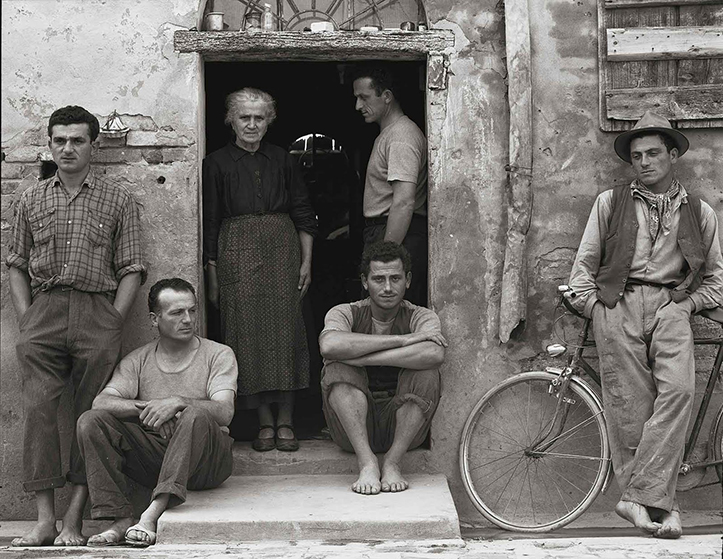
CARTA DE PAUL STRAND A LOS ESTUDIANTES DE FOTOGRAFÍA. 1923.
(Traducción del original por José B. Ruiz. VIII-2017).
“Todos somos estudiantes, algunos lo seremos durante más tiempo que otros más experimentados. Cuando dejéis de ser estudiantes, posiblemente estéis cansados de estar activos respecto a la motivación por vuestro trabajo. Os hablo de estudiante a estudiante. Quiero decir que antes de que invirtáis tiempo en la fotografía (que va a ser mucho) penséis el porqué es importante para cada uno de vosotros.
Si lo que realmente perseguís es llegar a ser pintores u otra cosa, entonces no fotografiéis, salvo que sea por puro entretenimiento. La fotografía no es un atajo para pintar, para ser un artista o para cualquier otra cosa. Por otro lado, si la cámara y el equipo os fascinan y motivan vuestra energía y vuestro respeto, entonces aprended a fotografiar. Descubrid primero lo que vuestra cámara y vuestro equipo puede hacer sin ninguna modificación, solo con vuestra propia visión. Fotografiad un árbol, una máquina, una mesa, cualquier antigüedad, hacedlo una y otra vez modificando la luz. Mirad lo que registra vuestra emulsión, descubriréis los resultados obtenidos con diferentes tipos de papel y gradaciones. Las diferencias de color pueden ser obtenidas utilizando uno u otro revelador y ved cómo estas diferencias cambian la expresividad de la imagen. El campo es ilimitado, inabarcable, sin abandonar los límites naturales del propio medio. Resumiendo, experimenta y olvida el Arte del Pictorialismo y otras palabras más o menos carentes de sentido.
Mirad los libros de autores, exposiciones y, al menos, conoced lo que los fotógrafos han hecho. Y mirad críticamente lo que ha supuesto en general y lo que hace cada uno de vosotros ahora. Algunos han dicho que Stieglitz tuvo impacto porque hipnotizaba a sus modelos. Id a ver en sus imágenes lo que hizo con las nubes, para descubrir si tuvo poderes hipnóticos también sobre los elementos. Mirad todas estas cosas. Ved lo que significan para vosotros, lo que podéis asimilar y dejad el resto. Sobre todo mirad alrededor, a vuestro mundo inmediato. Si os sentís vivos es que significa algo para vosotros, y si mostráis suficiente interés por la fotografía y sabéis cómo utilizarla, querréis fotografiar ese significado.
Si permitís que la visión de otras personas se interponga entre el mundo y vuestra propia visión obtendréis algo ordinario y sin significado: fotografía pictórica. Pero si mantenéis clara vuestra visión, obtendréis algo que será al menos una foto con vida propia, como un árbol o una caja de cerillas, si es que creéis que estas cosas tienen vida. Para lograrlo no hay atajos, no hay fórmulas, ni reglas, tan solo si acaso, las que gobiernan la vida de cada uno. Así que se necesita una autocrítica más rigurosa y trabajo constante. Pero primero, aprended a fotografiar. Para mí es todavía una preocupación interminable.
CARTA ORIGINAL DE PAUL STRAND A LOS ESTUDIANTES DE FOTOGRAFÍA. 1923.
“We are all students, some are for longer than more experienced ones. When you leave to be students, you may tire of being alive with respect to the direction of your work. Therefore I speak from student to student. I mean, so before you spend time on the photography (on the other hand will take much) to think that point is important for each one of you.
If you really persecute is to paint or something else, then do not photograph, except in the case of pure fun. Photography is not a shortcut to painting, to become an artist or anything else. On the other hand if the camera and materials fascinates you and motivates your energy and your respect, learn to shoot. Discover first what this camera can do and these materials without any interference, only with your own vision. Photograph a tree, a machine, a table, any old thing, do it again and again by changing the light. Look what records your movie, you will discover the results obtained with different paper types and gradations. Color differences can be obtained using one or another developer and how these differences change the expressiveness of the image. The field is unlimited, endless, without leaving the natural boundaries of the medium. In short work, experience and forget the Art of pictorialism and other words in more or less meaningless.
See author’s books, exhibitions, at least know what they have done the photographers. And see also critically what is this doing in general and what each one of you at now. Some have said that Stieglitz had force because he hypnotized his models. Go and see what he has done with his clouds, to discover if his hypnotic powers also extended over the elements. Look all these things. See what they mean to you, what you can assimilate and forget the rest. Above all things look around you, your immediate world. If you are alive means something to you, and if you show interest enough for photography and know how to use it, you’ll want to photograph that meaning.
If you allow the vision of other people come between the world and your own vision you will get something ordinary and meaningless: pictorial photography. But if you hold this clear vision, you will get something at least be a picture with life itself, like a tree or a box of matches, if you believe that these things have a life. To achieve this there are no shortcuts, no formulas, no rules, only in any case, that govern the life of each. However, it is needed most rigorous self-criticism and constant work. But first learn to shoot. To me this is already a problem without end.”